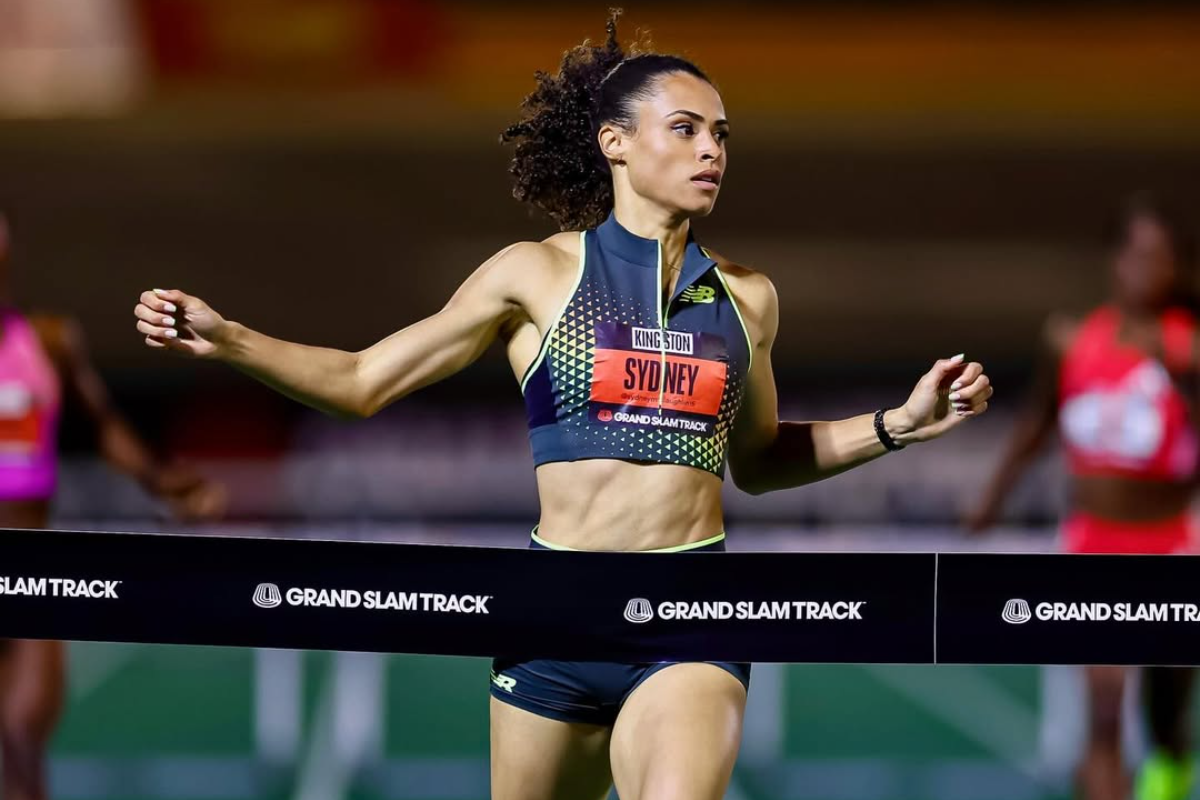
Imago
Credit: Instagram/ Sydney McLaughlin-Levrone

Imago
Credit: Instagram/ Sydney McLaughlin-Levrone
Sydney McLaughlin-Levrone arrived at the USATF Outdoor Championships in Eugene with a bold declaration of intent. The Olympic champion, better known for her dominance in the 400-meter hurdles, announced that she would abandon the barriers this season and commit fully to the flat 400 meters. “This is a challenge — I want to challenge myself, I felt like this year, I wanted to step out of the box and really push myself in a different way,” she explained after claiming the national title. Her 48.90-second run secured the gold medal and hinted that the American record of 48.70, untouched since 2006 (set by US sprinter Sanya Richards-Ross at the IAAF World Cup in Athens), might finally be under threat. Yet the celebrations were brief.
Watch What’s Trending Now!
Only weeks later, her greatest rival delivered a performance that instantly altered the conversation.
At the Diamond League Final in Zurich, Salwa Eid Naser produced one of the sharpest races of her career. The Bahraini sprinter covered the lap in 48.70 seconds, establishing a new meet record and defeating a world-class field. Marileidy Paulino, the reigning world champion, trailed in 49.23, while Henriette Jæger of Norway set a national record of 49.49 in third place. The victory not only marked Naser’s third Diamond League trophy, but it also surpassed McLaughlin-Levrone’s lifetime best of 48.74 from 2023. For a runner who already owns the 2019 world title and a personal best of 48.14, Naser’s latest result reasserted her authority in an event she has long controlled.
ADVERTISEMENT
The significance for McLaughlin-Levrone is immediate.
Naser has now recorded three marks this season under 48.90, including 48.67 in Kingston and 48.85 in Paris. Her consistency contrasts with McLaughlin-Levrone. Despite a strong American season, she has yet to dip under 48.90 in 2025. Sydney’s decision to prioritize the 400 meters was intended to test her limits and broaden her résumé, but Naser’s surge has sharpened the competitive stakes. With the World Championships in Tokyo only weeks away, the question is no longer whether McLaughlin-Levrone can pursue an American record, but whether she can withstand the pressure from an opponent who has already eclipsed her benchmark.
Historical context underscores the challenge. Naser’s 48.14 from Doha 2019 remains the third-fastest performance ever, behind only Marita Koch and Jarmila Kratochvílová. By contrast, McLaughlin-Levrone’s best sits six-tenths slower, though she holds the distinction of being the world record holder in the 400 hurdles with 50.37. Her versatility is undeniable, but the flat 400 has specialists who have refined the distance for years. Paulino, who captured gold in Budapest 2023 with 48.76, continues to represent a steady presence. Athletes such as Jæger and Martina Weil, both posting national records this season, add further depth to a field that is rapidly closing ranks.
ADVERTISEMENT
48.70s!!🔥🔥
Meet Record ☑️Salwa Eid Naser 🇧🇭 ran a storming race, clocking a time of 48.70s to win the women’s 400m Diamond League trophy!
She defeated Marileidy Paulino 🇩🇴 who was 2nd in 49.23s and Henriette Jæger 🇳🇴 in a National Record of 49.49s.
4. Martina Weil 🇨🇱 49.72… pic.twitter.com/ipcBVvUbAR
— Track & Field Gazette (@TrackGazette) August 28, 2025
For McLaughlin-Levrone, the Tokyo championship presents both an opportunity and a trial. She remains undefeated in 19 consecutive 400-meter finals, a stat that reflects her ability to rise on big occasions. Levrone also came within two-tenths of Sanya Richards-Ross’s American record earlier this month, proof that she is capable of entering the sub-48.70 territory. Yet Naser’s Diamond League victory has raised the threshold of what will be required. Anything slower than 48.70 may no longer be sufficient to secure gold.
ADVERTISEMENT
The story of the women’s 400 meters in 2025 is now clear. McLaughlin-Levrone, having stepped away from her unparalleled reign in the hurdles, finds herself confronted by a rival who has already proven she can run faster than her lifetime best. With Naser in commanding form, Paulino and others pressing close, and the American record dangling within reach, the stage in Tokyo is set not for a coronation but for a confrontation. And now, the real challenge for Sydney McLaughlin-Levrone lay in overcoming Salwa Eid Naser and Marileidy Paulino, whose consistency and speed had reshaped the 400m landscape.
Rivals rise as Sydney McLaughlin-Levrone faces toughest 400m test yet
Sydney McLaughlin-Levrone’s recent dominance at the national level no longer appeared sufficient preparation for what awaited her on the world stage. The 400 meters, once a domain she seemed able to conquer by sheer force of talent, had become a discipline defined by two athletes who had refused to yield ground: Salwa Eid Naser and Marileidy Paulino.
ADVERTISEMENT
Both had tested themselves across the international circuit with unrelenting regularity, and both had already established markers faster than anything McLaughlin-Levrone had produced this season. The American’s 48.90 at Eugene placed her close, but not ahead, and that distinction mattered profoundly in a race where margins were decisive.

Reuters
Paris 2024 Olympics – Athletics – Women’s 400m Hurdles Round 1 – Stade de France, Saint-Denis, France – August 04, 2024. Sydney McLaughlin-Levrone of United States at the start of heat 5 REUTERS/Aleksandra Szmigiel
Naser had set the tone as early as April in Kingston, registering 48.67, a time that stood as the fastest of the year. Paulino, though second that day, soon responded with a 48.81 in Paris, reinforcing her position as a formidable presence. They had traded victories, tested one another repeatedly, and carried the sharpness that comes from genuine rivalry. By contrast, McLaughlin-Levrone’s decision to bypass those early confrontations left her preparing in relative isolation, which raised the question of whether a season of limited exposure to her true adversaries could leave her untested when the stakes rose.
ADVERTISEMENT
The weight of past encounters offered its own reminder.
Top Stories
Forced to Leave FOX, Cowboys Legend Troy Aikman Says ESPN Is Like ‘U.S. Government’ & Clearly Distinguishes the Two Networks

Who Is Paige Shiver? All About Michigan Football Staffer & Daughter of Veteran Bears Scout Jeff Shiver

FOX Issues Strict Ban on Terry Bradshaw But NFL Legend Defies It to Join Popular Morning Show

Michael Jordan Brings NASCAR to Its Knees as Jim France’s Courtroom Collapse Triggers Settlement

What Happened to T.J. Watt? Why Is He Hospitalized? Steelers Announce Latest News on LB Before Dolphins Game

LIV Golf to Cut Ties With Veteran Pro After His PGA Tour Return Intentions Became Public

At the 2024 Olympic Games in Paris, Paulino captured gold in 48.17, Naser secured silver, and McLaughlin-Levrone, accustomed to finishing first, found herself outside the medals.
“I wanted to challenge myself,” she remarked earlier this year, but that challenge has now extended beyond her own reinvention. Now, for McLaughlin-Levrone, the World Championships would not be defined solely by time, but by whether she could finally overtake opponents who had set the standard.
ADVERTISEMENT
ADVERTISEMENT
ADVERTISEMENT
ADVERTISEMENT

